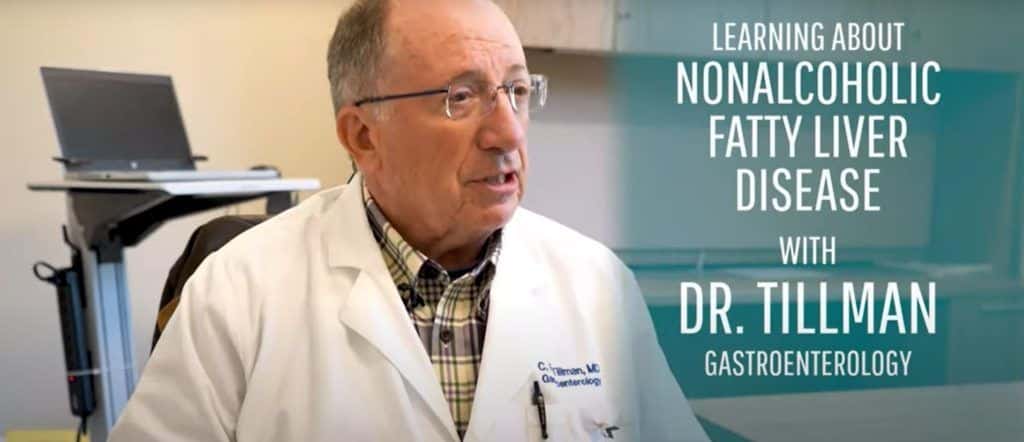Non-alcoholic fatty liver disease: today, the number once cause or number one diagnosis that would lead someone to have a liver transplantation. The patient is often someone who comes in with right upper quadrant pain; they feel fullness and distension; they have a general sense of not feeling good. So we can draw a simple red top blood test to send off to the lab, and they can come back and tell us not only if it’s fatty liver disease, but to what extent of scarring in the liver and be very accurate. It’s not as good as the liver biopsy, but it’s a whole lot safer and a whole lot easier. Certainly being obese makes you at a higher risk for it. Uncontrolled diabetes is a higher risk for it and to have a diet high in carbohydrates makes you at higher risk. Mostly there are no medications for it; however, dietary restriction of carbohydrates can reverse the ultrasound from a heavily enlarged liver at 18 centimeters vertical length to one that– a year later– someone who strictly sticks to the diet can get it down to 11 or 12 centimeters, which is normal sized liver.
You don’t need anything that’s derived from corn, and that includes high fructose corn syrup in fruit juices and soft drinks. Rice is rice, but in Louisiana, we have to talk about it. Wheat– now wheat is desserts, cakes, cookies. What we say to the patient is “You can eat a pizza. You can eat the topping but you can’t eat the crust. You can have a hamburger but not the bun.” And potatoes – what are potatoes in America? French fries. The only tool you have as the physician is words. You can’t operate on the patients, you can’t give them a pill. You only have your words in a window of about 10 minutes and you can use them to save a life.






